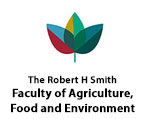Citation:
Date Published:
DECAbstract:
The metabolic adaptations by which phloem-feeding insects counteract plant defense compounds are poorly known. Two-component plant defenses, such as glucosinolates, consist of a glucosylated protoxin that is activated by a glycoside hydrolase upon plant damage. Phloem-feeding herbivores are not generally believed to be negatively impacted by two-component defenses due to their slender piercing-sucking mouthparts, which minimize plant damage. However, here we document that glucosinolates are indeed activated during feeding by the whiteflyBemisia tabaci. This phloem feeder was also found to detoxify the majority of the glucosinolates it ingests by the stereoselective addition of glucose moieties, which prevents hydrolytic activation of these defense compounds. Glucosylation of glucosinolates inB. tabaciwas accomplished via a transglucosidation mechanism, and two glycoside hydrolase family 13 (GH13) enzymes were shown to catalyze these reactions. This detoxification reaction was also found in a range of other phloem-feeding herbivores.

